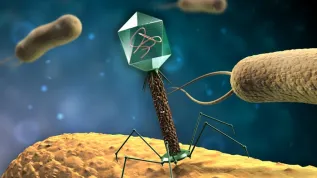
Scientists at Wroclaw Medical University have created a ‘Digital Rash Atlas’, a mobile tool designed to help doctors distinguish between allergic rashes and those caused by serious infections in children — and decide more quickly when hospitalisation may be needed.
Developed by researchers from the university’s Department of Paediatrics and Infectious Diseases, the Digital Rash Atlas compiles decades of pediatric experience into an interactive educational app.
It enables doctors to compare clinical images, learn diagnostic patterns, and practice differential diagnosis through short, focused learning sessions.
“As is often the case, this invention was born from a genuine need,” the developers wrote in a university statement. “Rapid diagnosis of infectious diseases is of paramount importance both for the patients and those around them. Decisions on starting effective treatment, hospitalisation, or isolation must be made immediately. However, this is not so simple, not least because most childhood infectious diseases have non-specific symptoms.”
“Correct diagnosis in paediatrics is becoming increasingly difficult,” said Professor Leszek Szenborn, head of the department. “On the one hand, fewer children are being born, and on the other, infectious diseases that we haven’t encountered for decades are returning.”
He added that “a growing number of patients with chronic conditions, including autoimmune diseases, are treated with biological therapies, which modify the presentation of infectious diseases.”
Combined with widespread travel and exposure to infections unfamiliar in the region, these factors mean “doctors have increasingly less chance of seeing the symptoms of many diseases firsthand, including dangerous ones that require rapid intervention.”
“This applies not only to young people just entering the profession,” Szenborn said. “Paediatricians with many years of experience can no longer rely on their own experience, because in their practice they haven’t encountered cases of diseases that disappeared for decades thanks to widespread vaccination. Therefore, young people often have no one to learn from.”
He added that “the increasing rate of disease spread makes diagnosis even more difficult,” adding, “In the age of steamships, the Spanish Flu took three months to spread. The COVID-19 pandemic rapidly spread worldwide.”
The Digital Rash Atlas draws on a large collection of pediatric rash images gathered at the department over many years. The printed atlas of skin lesions in children has now been transformed into a digital resource.
“Our atlas is much more than just a collection of unique photographs from clinical practice, which we intend to continue to expand with new cases,” said Kamila Ludwikowska, PhD, who co-created the app.
“We wanted to create a quick learning tool that allows to compare clinical images and acquire practical differential diagnosis skills. At the same time, we believed that learning could be enjoyable and take the form of an engaging game. That is why the atlas is equipped with a range of features — not only useful but also user-friendly and adapted to the modern audience,” she added.
For clinicians, the app acts as a digital “cheat sheet.” A five-step algorithm leads users through a logical diagnostic path — from what to look for and what questions to ask to diagnosis and treatment. Doctors can search by rash type or location and compare images with their patients’ cases. Each image includes a short disease description.
The app also features five-minute expert lectures, interactive exercises, and scientific quizzes. Users can earn a Wroclaw Medical University certificate confirming their new skills.
The Digital Rash Atlas is the first part of the broader Custom-med educational platform, which will include micro-courses and additional medical areas. The project was developed with Animativ, the company behind Kid AID, an AI-based app for early detection of sepsis in children.
The platform’s full version is expected to launch by the end of the year.
It will be available free to Wroclaw Medical University staff and students, with plans for future commercial access via subscription.
(PAP)
PAP - Science in Poland
ros/ bar/
tr. RL













